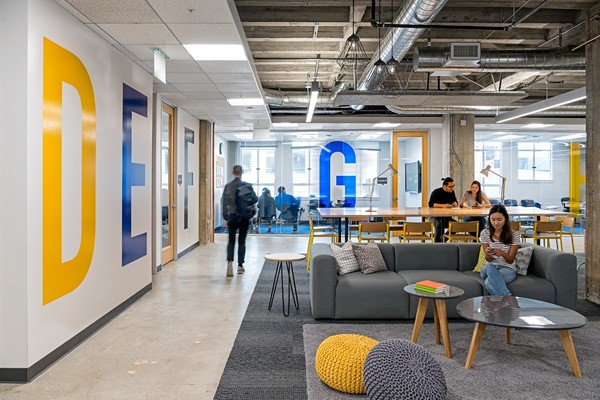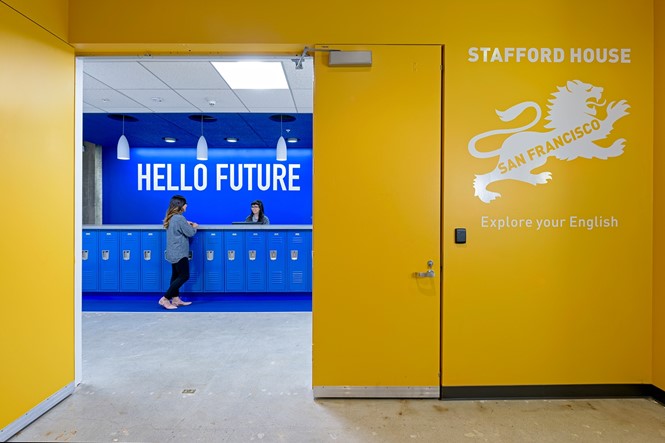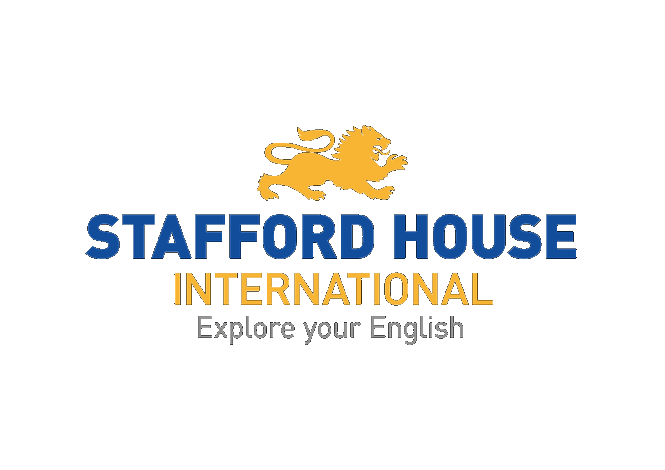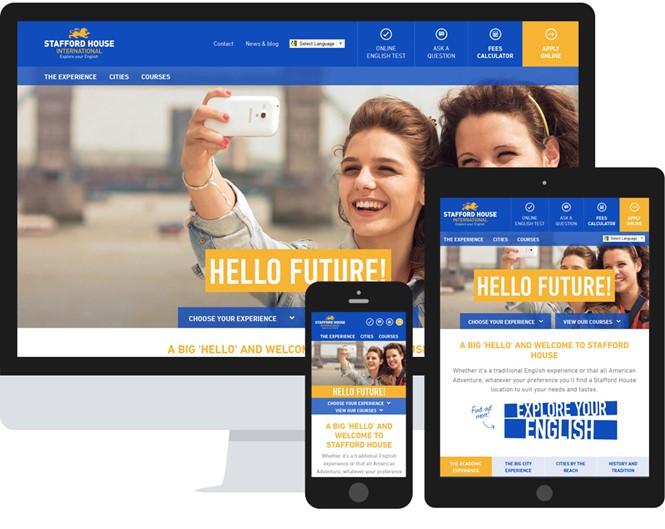Brand experience: Stafford House
Creating a place where English language students could not only learn, but broaden their educational experiences allowed Stafford House International to take a new strategic approach to its branded environment. Amy Sandys reports
After Standard Chinese and Spanish, the English language is the third most widely-spoken in the world. Beginning life as an obscure Germanic-derived dialect, English now dominates global trade and conversation; integral in forming and maintaining business relationships, the ability to converse in English is a highly desirable skill among employers worldwide. As a result, the demand for English language schooling in historic centres of English-speaking countries has boomed in recent years, with cultural towns becoming prime locations for aspirational foreign students. A multitude of companies offering English language tuition have also appeared – among them, Stafford House International.
Yet, while the educational experience offered by an English language school is undoubtedly paramount, the social interaction offered by these institutions can be forgone in favour of a purely academic focus. For Stafford House International, it was not enough to simply equip its students with skills to succeed in business. Part of the company mission is to equip its students with skills through which they can succeed in their personal life, too, reflected in the updated Stafford House International slogan, ‘Explore your English.’
For London and Los Angeles-based brand experience agency Mystery, this verbal identity shows Stafford House’s commitment to going beyond the sometimes clinical, often serious environments of English language schools. Instead, Mystery has worked with Stafford House International to create a place where students feel comfortable making friends, practising conversational language skills and exploring their surroundings – all while learning in a welcoming, branded environment.
“Language school brand design can be corporate at times, that’s what we found through the research,” says Dan Einzig, founder and managing director of Mystery. “There was very little differentiation through the environment and the experience from one school brand to another.” But, says Einzig, an existing international portfolio of language schools characterised by sterile aesthetics and inflexible branding gave Stafford House International a real opportunity to differentiate its offering. “Part of [Stafford House’s] mission was not just to help students academically but also help them achieve their life goal,” says Einzig. “Learning the language was a stepping stone towards that and it helped in building their confidence – it was about creating a network of contacts from all around the world.”
And with centres across cities in the UK, US and Canada, Stafford House International has a wide variety of audiences for which to cater. While the emotional welfare of Stafford House’s students was a crucial consideration, Mystery’s brand experience also allows other stakeholders, such as teachers, parents and the agents employed by Stafford House, to become brand champions too. Emphasising the real-life experience of Stafford House alongside its educational excellence made the school’s offering unique in the marketplace. “The vast majority of competitors market themselves with rational, corporate reasons to apply,” says Einzig. “There are only a very small number with much more emotive lifestyle reasons to apply, but within that it would either focus exclusively on the experience or focus exclusively on the education side. We wanted to own the space that said, yes it’s an emotive lifestyle experience but it’s equally an educational experience.”
With outlets across three major English-speaking regions, Mystery began the brand rollout with the company’s newly purposed San Francisco building. Giving the agency an opportunity to implement the branding in what Einzig describes as Stafford House’s flagship was both a blueprint and a statement. References to the old brand remain at the site, says Einzig, allowing stakeholders to recognise Stafford House through its brand promise – yet the new identity is sufficiently different and indicates the brand’s continual evolution. Waiving the school’s previous branding was a key part of Mystery’s strategy to appeal to both the emotive and educational side of the language school experience. In a sector often characterised by a lurid orange colour palette, Mystery chose to implement a bright blue and yellow design – fresh enough to reflect the brand angle of exploration, while fostering an educational environment in the building’s interior. “The choice of colour palette was largely down to differentiation,” says Einzig. “It was a case of looking at competitors and putting them all together and seeing how we could differentiate from them – but still keep within something that would reflect Stafford House’s positioning.”
“We created a community around the idea of a Stafford House lion, we
inherited that classic British lion icon as
part of the identity”

Visually, one of the most important changes made by Einzig and Mystery is the revamped lion, which had for so long been merely the underused Stafford House ‘mascot.’ Although the previous logotype was led by the lion image – bright orange amid a sea of grey and orange shades and an iconic link back to the England – it served no real purpose. But through the lion, Einzig saw an opportunity to not only further differentiate the brand – but also to instil a sense of belonging for the students and teachers at Stafford House International. “We were able to create a sense of pride around being a Stafford House student rather than any other English language school,” says Einzig. “We created a community around the idea of a Stafford House lion, we inherited that classic British lion icon as part of the identity. In fact, we just identified that culture then exposes it to the outside world – internally the culture did exist in some respects, and we just brought it to light.”
So in moving away from the previously generic and corporate logo style, Mystery added meaning to a previously constrained brand experience. This extends across the redeveloped website and corporate print literature, with a digital strategy led by a sense of inclusion previously lacking in both the Stafford House brand, and among English language school brands generally. By changing the outward-facing brand, Stafford House’s internal, personal brand experience was also able to shift towards inclusivity. Einzig says, “[We did] what we always do, which is fuse our brand work in architecture and the interior experience so it isn’t just a logo on a page, it’s part of the environment. Seeing the students adopt the lion and take that to heart is really rewarding because you convince yourself it’s a genius idea – then when it actually gets adopted it’s so rewarding to see people celebrate their connection with the brand,” he explains.
And, for Mystery, developing advocacy as well as differentiation was a key part of the Stafford House brand development process. While the school is a commercial endeavour, funded through a fee-paying structure, it is invested in its students. The key difference with Stafford House, says Einzig, is how it fosters a future-facing perspective. “The imperative is to put students first and give them an amazing experience, something they want to write home about,” says Einzig. “It’s putting them at the forefront of everything. It’s not cheap just to define a space for students to hang out in – other schools are loathe to do it because they’d rather it was a fee-earning space like a classroom, and you can justify the cost of a classroom.”
But, says Einzig, for Stafford House, the commercial aspect of the business is negated if its students are unhappy or uncomfortable in a building which doesn’t cater for their social and emotional needs. “Stafford House took the long-term view and said, if we want to drive advocacy, we want to give students the lifestyle experience while also giving them a really great education,” says Einzig. “From our perspective, it’s about being able to field student enquiries and genuine advocates who experience the school in a different way.” This forward-facing, brand advocacy-driven perspective is often missing from brand experience development projects. Current and future Stafford House students will be welcomed into an environment built on education but driven by “[the] idea of personal development, the idea that the confidence students get from learning and experiencing and making friends from around the world opens up new opportunities for them,” says Einzig. “It’s such a worthwhile endeavour – although it’s a commercial proposition – in terms of the positivity that can affect people’s lives.”
As the world’s youth is exposed to an increasingly homogenous media environment where English remains the dominant language, it is unsurprising that the desire to go beyond simply understanding English is rising. Attending English language courses, such as is offered by Stafford House, offers pupils the chance to learn and apply their language skills in an educational environment. Yet in addressing the emotional and social needs of the willing learners, the required experience – that which goes beyond learning words – can be fostered. “Ultimately what we’ve tried to do is explore why they are there and how to make friends,” says Einzig. “That then empowers students with the confidence to realise their personal potential, and that’s really what it was all about – putting them first.”















